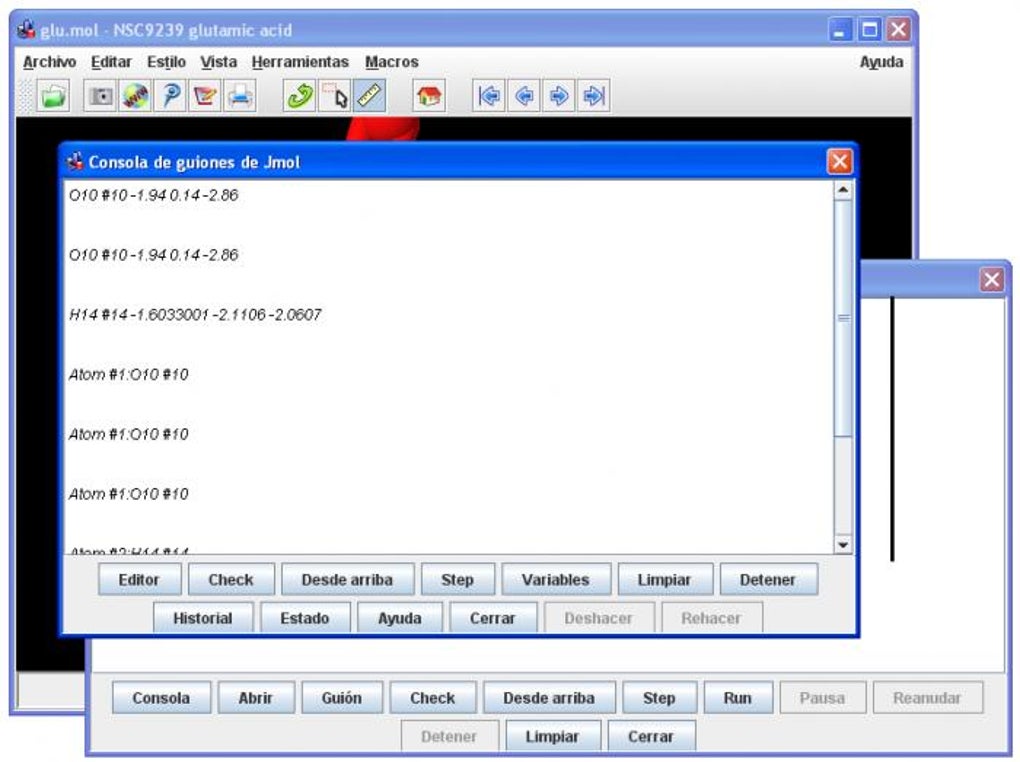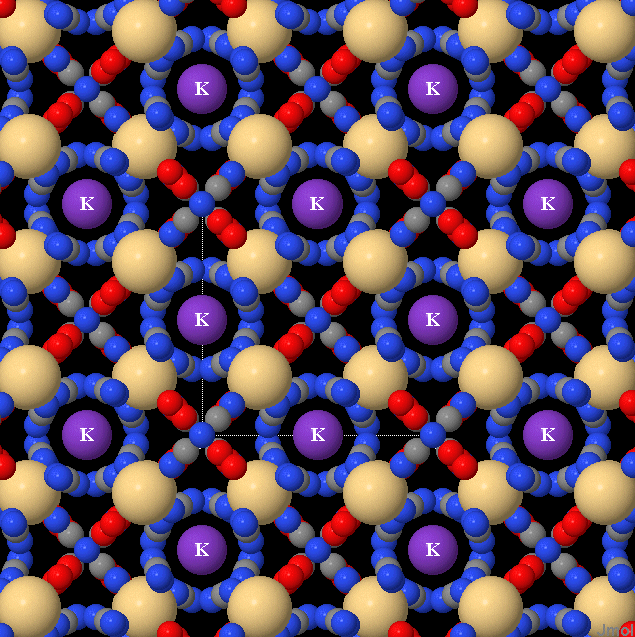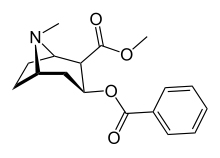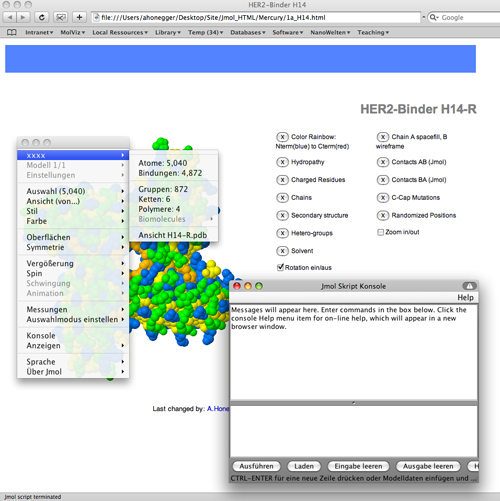

- #Jmol applet how to
- #Jmol applet full
- #Jmol applet zip
-Xmx sets the maximum memory heap size.Where the # must be substituted by a number in megabytes (hence the "m" after it). Less or more memory can be allocated by using: Memory available to Jmol is determined by Java. Java -Dplugin.dir= /path/to/plugins -jar Jmol.jar To set a path where to look for plugins for Jmol, use:.Java -Ddisplay.speed=fps|ms -jar Jmol.jar To report the display speed in either frames per second or milliseconds per frame (the default), use:.(default is the language of the operating system or else, if that is not available, en_US see also). Java -Duser.language=ca|cs|de|en_GB|en_US|es|fr|hu|it|ko|nl|pt_BR|tr|zh_TW -jar Jmol.jar To set the language to be used for the interface, use:.To use a custom pop-up menu, defined in a file, use either of these:.Note: you need Jmol 12.2.0 or later to use this feature. Communication with the application in kiosk mode uses ports with JSON commands (see ).
#Jmol applet full
By default it opens in full screen, but you can use the -g option above to set a certain window size. This mode displays a borderless window (no top menu, button bar or status bar) it's more like the applet, but with an optional banner across the top. By default, size is the last size used or else 500x500. Jmol.jar -geometry WIDTHxHEIGHT using lowercase 'x' and no spaces, e.g.
To set the application's window size, use either of these:. File names and commands may need to be enclosed in quotes when they are not simple (it is safe to always use quotes). the commands written after lowercase "-j"Įither of the 4 may be omitted.  the commands inside the scriptFileName text file (file extension is irrelevant, but we like to use. the commands written after uppercase "-J". Jmol.jar fileName -J scriptCommands -s scriptFileName -j scriptCommands irrespective of their actual order in the command line, they will always be run in this order: You can combine loading a molecular file, running a script file and running script commands (only Jmol 11.7.x and later):. To run a script file immediately after opening Jmol, use:. To load a molecular file immediately after opening Jmol, use:. Java -jar Jmol.jar -help Loading files and running scripts To show help for command-line options, use either of these:. Provided you have in the same folder/directory the batch file or shell script adequate for your OS (included with Jmol distribution). Otherwise, the general syntax for all cases isīut the 'java -jar' part will be omitted for simplicity (except where it is unavoidable). If you want to attach a Jmol icon to your preferred method of opening Jmol, you can get one from the Recycling Corner. If you have trouble running the application, see also Troubleshooting.
the commands inside the scriptFileName text file (file extension is irrelevant, but we like to use. the commands written after uppercase "-J". Jmol.jar fileName -J scriptCommands -s scriptFileName -j scriptCommands irrespective of their actual order in the command line, they will always be run in this order: You can combine loading a molecular file, running a script file and running script commands (only Jmol 11.7.x and later):. To run a script file immediately after opening Jmol, use:. To load a molecular file immediately after opening Jmol, use:. Java -jar Jmol.jar -help Loading files and running scripts To show help for command-line options, use either of these:. Provided you have in the same folder/directory the batch file or shell script adequate for your OS (included with Jmol distribution). Otherwise, the general syntax for all cases isīut the 'java -jar' part will be omitted for simplicity (except where it is unavoidable). If you want to attach a Jmol icon to your preferred method of opening Jmol, you can get one from the Recycling Corner. If you have trouble running the application, see also Troubleshooting.  Double-click on a molecular coordinates file whose extension has been previously associated to Jmol ( HowTo). From the command line: java -jar Jmol.jar (of course, issued from the folder/directory where Jmol.jar is, or else pointing to it with a full path). Execute one of the batch files/shell scripts that are part of Jmol distribution (Windows, MacOS, Linux, Unix). Click on a previously created Start menu entry (Windows terminology - HowTo). Click on a previously created shortcut (Windows terminology - HowTo).
Double-click on a molecular coordinates file whose extension has been previously associated to Jmol ( HowTo). From the command line: java -jar Jmol.jar (of course, issued from the folder/directory where Jmol.jar is, or else pointing to it with a full path). Execute one of the batch files/shell scripts that are part of Jmol distribution (Windows, MacOS, Linux, Unix). Click on a previously created Start menu entry (Windows terminology - HowTo). Click on a previously created shortcut (Windows terminology - HowTo). 
To open the application, follow these instructions:
#Jmol applet how to
See also specific tips in Support/Linux, Support/OS X, Support/Windows, for example how to create a Mac OSX native installer.
#Jmol applet zip
zip or tar.gz format) and extract/uncompress only the Jmol.jar file to the folder of your choice.








 0 kommentar(er)
0 kommentar(er)
